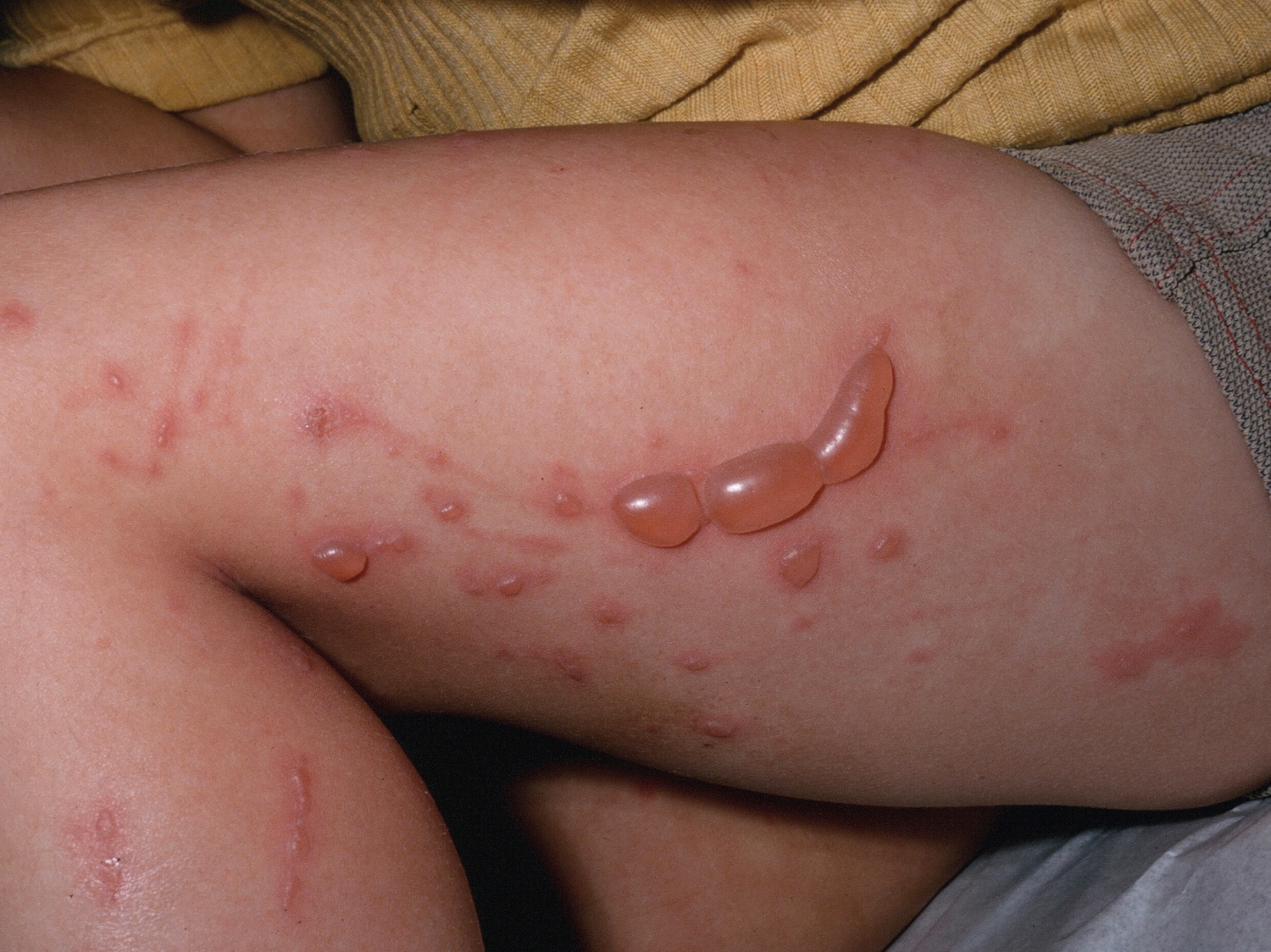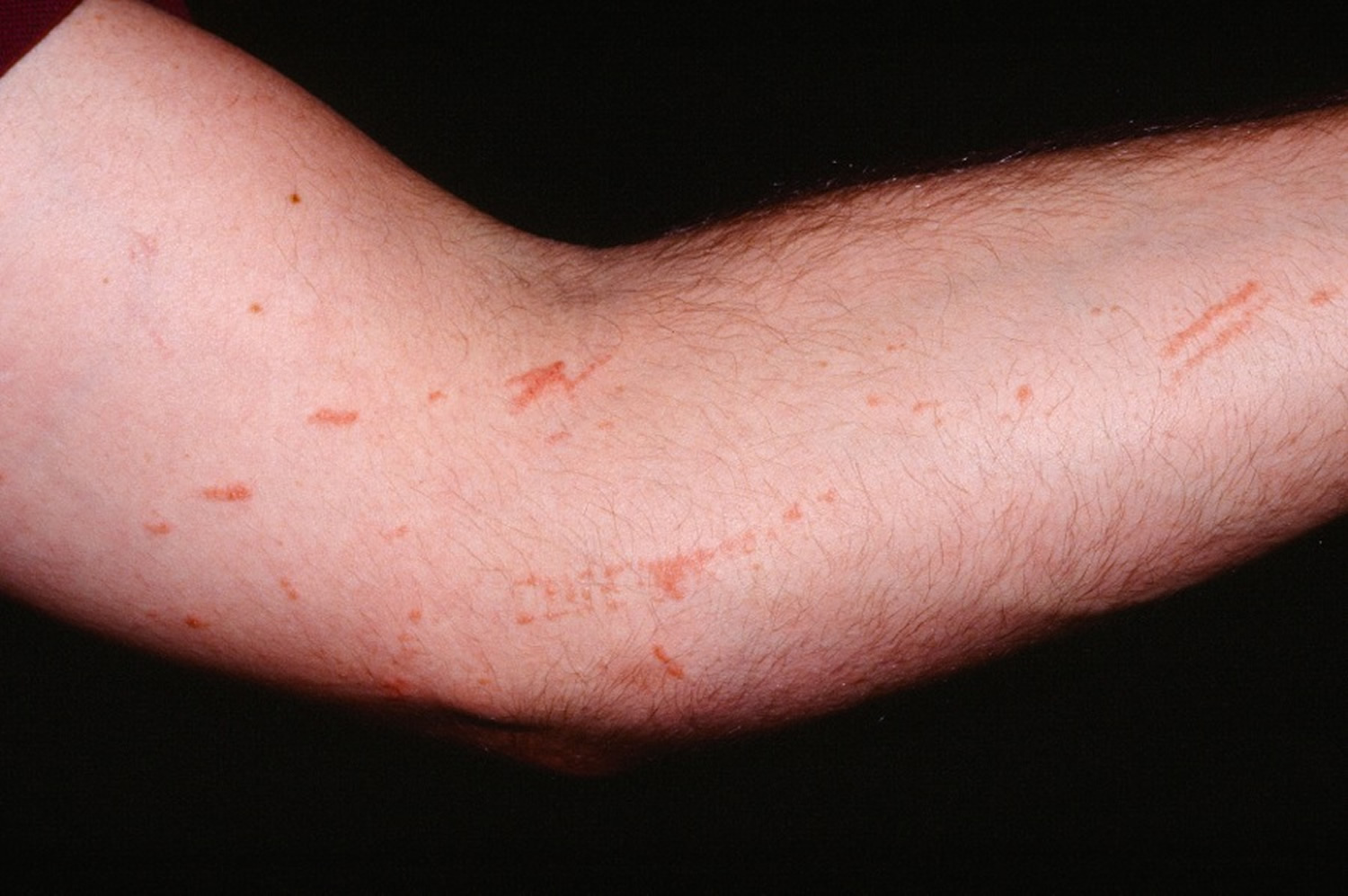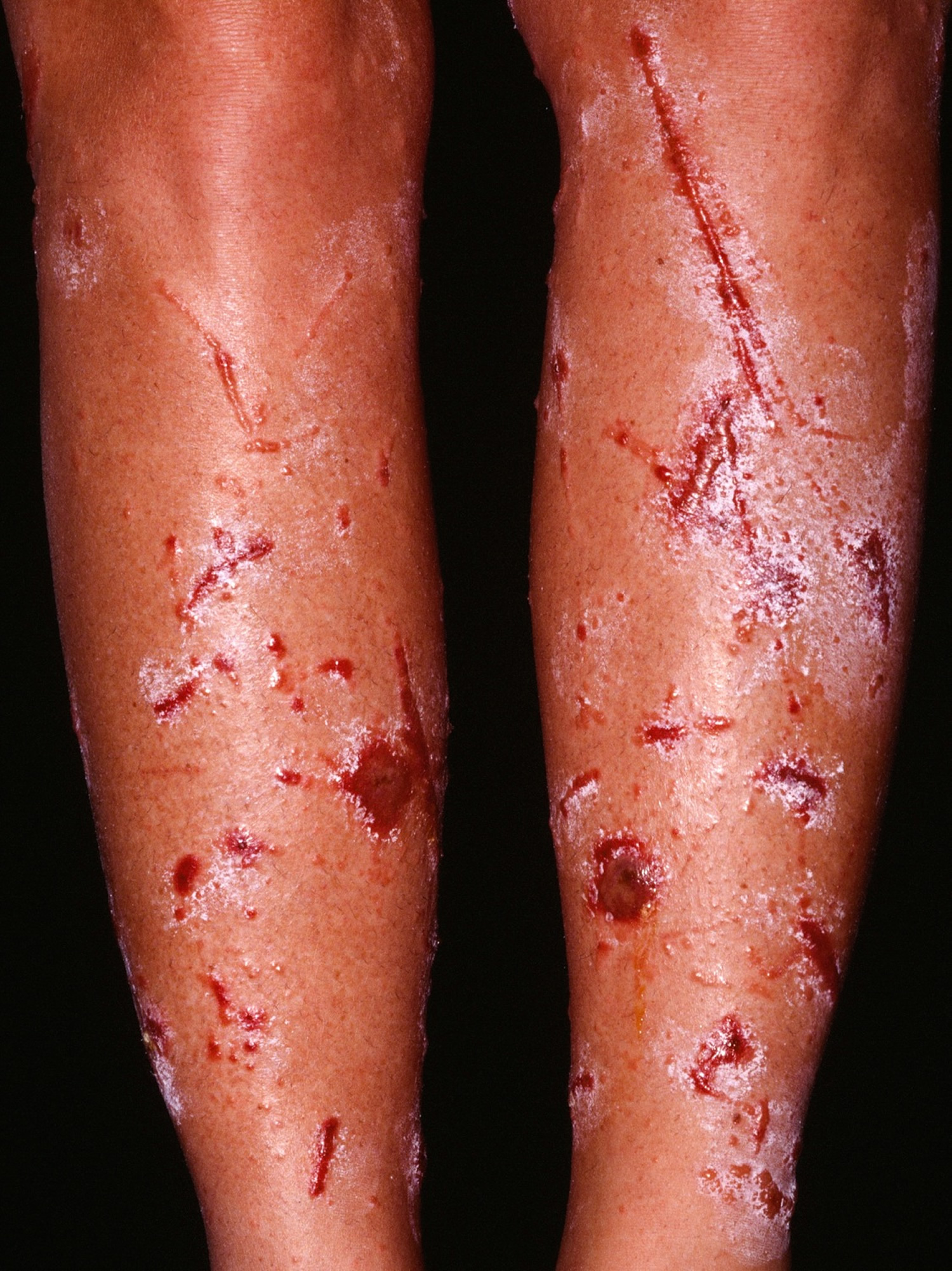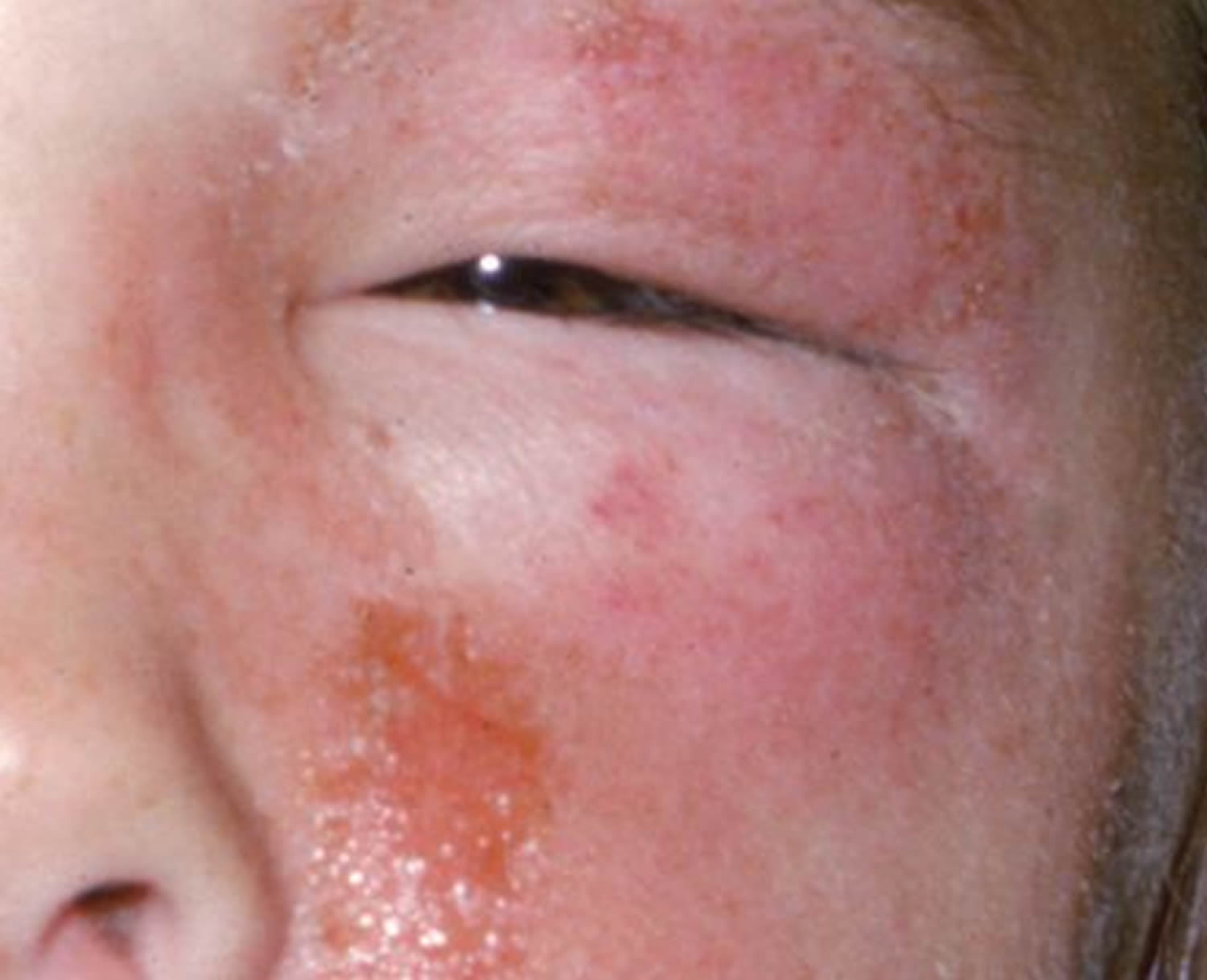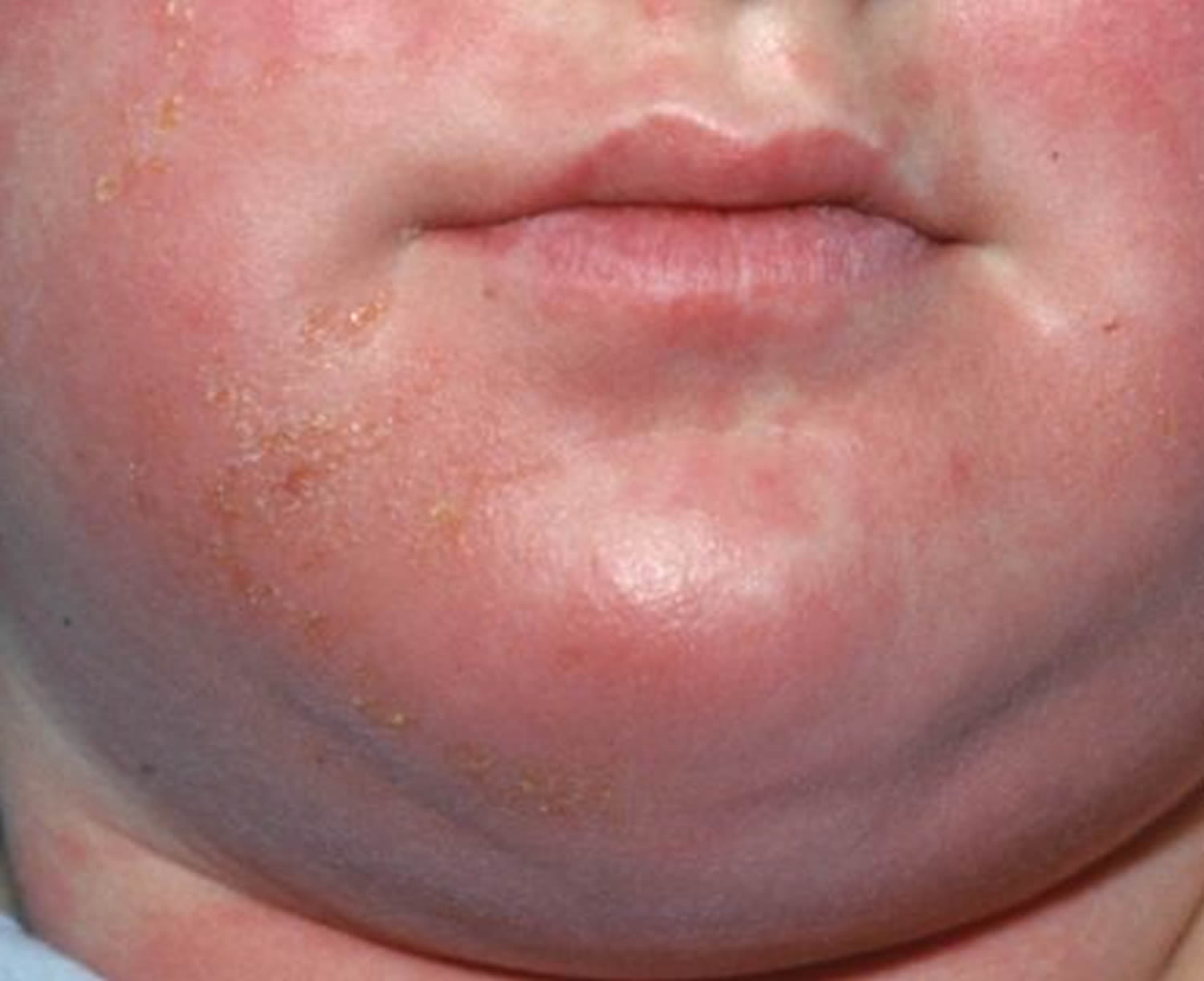Contents
Poison ivy rash
Exposure to the resin of poison ivy leaves, stems, branches, and roots causes an allergic reaction in some people. Many people get a rash from poison ivy, poison oak, and poison sumac. Poison ivy, poison oak, and poison sumac dermatitis is a contact dermatitis (type IV delayed hypersensitivity immune reaction) to an oily resin (urushiol) found on the leaves and in the stems and roots of plants of the Rhus genus (poison ivy, oak, and sumac). The very first time an individual is exposed to poison ivy urushiol oily sap, they may or may not develop a rash. Urushiol is the oil in poison ivy, oak, and sumac. You find this oil in all parts of the plants — the leaves, stems, fruits and even the roots. Within minutes of contact with urushiol, the skin starts to absorb it. But you don’t feel this. And you don’t see a rash right way. Some people are genetically programmed not to develop a rash from poison ivy. If you are predisposed to developing a rash from poison ivy, the rash usually appears between 10 and 14 days after your first exposure to the plant. A second exposure may cause a blistering skin rash to develop within 2 to 3 days after exposure to the urushiol oil.
Poison ivy rash is typically seen on the extremities at sites of contact with the plant and appears as erythematous, linear plaques with associated vesicles and bullae. If not washed away, the resin may be easily and unwittingly transferred to other body locations, including the trunk, genital area, and face, where it will incite the same reaction. Pruritus is generally severe.
Black dot (or black spot) poison ivy is the presence of black residue on the skin surface that occurs when a high concentration of urushiol contacts the skin and undergoes oxidization in the presence of moisture.
Poison ivy, oak, or sumac dermatitis can occur in people of all races and ages, although the elderly and very young children may be less susceptible. Pruritus is often severe. Scratching does not spread the eruption: vesicles and plaques first appear at sites of contact with high concentrations of antigen and then, as the immune response increases, skin that has contacted lower antigen concentrations becomes involved. The contact dermatitis will persist for 3-4 weeks if not treated.
Poison ivy rash can range from mild to severe, depending on how much sap gets on your skin and how sensitive you are to it. Problems can also happen if the plants are burned. Airborne sap-coated soot can get into the eyes, nose, throat and respiratory system.
Recognizing Poison Ivy, Poison Oak, and Poison Sumac
- Poison Ivy: Found throughout the United States except Alaska, Hawaii, and parts of the West Coast. Can grow as a vine or small shrub trailing along the ground or climbing on low plants, trees and poles. Each leaf has three glossy leaflets, with smooth or toothed edges. Leaves are reddish in spring, green in summer, and yellow, orange, or red in fall. May have greenish-white flowers and whitish-yellow berries.
- Poison Oak: Grows as a low shrub in the Eastern and Southern United States, and in tall clumps or long vines on the Pacific Coast. Fuzzy green leaves in clusters of three are lobed or deeply toothed with rounded tips. May have yellow-white berries.
- Poison Sumac: Grows as a tall shrub or small tree in bogs or swamps in the Northeast, Midwest, and parts of the Southeast. Each leaf has clusters of seven to 13 smooth-edged leaflets. Leaves are orange in spring, green in summer, and yellow, orange, or red in fall. May have yellow-greenish flowers and whitish-green fruits hang in loose clusters.
Poison ivy is a type of toxic plant. It is very common in most parts of the United States. Poison ivy often grows low to the ground, resembling a weed or shrub. It also can grow taller as a vine, along plants, trees, or poles. Both forms have stems with 3 leaves. The leaves change color with the seasons. They may produce whitish flowers or berries.
Figure 1. Poison Ivy
Note: Eastern poison ivy is typically a hairy, ropelike vine with three shiny green (or red in the fall) leaves budding from one small stem. Western poison ivy is typically a low shrub with three leaves that does not form a climbing vine. May have yellow or green flowers and white to green-yellow or amber berries.
If you have a reaction to the urushiol oil, you can have these signs and symptoms:
- Itchy skin.
- Redness or red streaks.
- Hives.
- Swelling.
- An outbreak of small or large blisters, often forming streaks or lines.
- Crusting skin (after blisters burst).
Poison ivy rash is very itchy and can appear on any part of the body. The rash can continue to appear on new parts of the body when:
- Other parts of the body touch the oil.
- You spread the oil on your skin by touching other parts of your body.
- It may seem like the rash is spreading if it appears over time instead of all at once. But this is either because the plant oil is absorbed at different rates on different parts of the body or because of repeated exposure to contaminated objects or plant oil trapped under the fingernails.
Poison Plant Rashes Aren’t Contagious
The poison ivy rash is not contagious and you cannot give the rash to someone else. Even if the person touches the rash or the fluids in the blisters, the person cannot get the rash. The person has to touch the oil to get the rash. It is possible to pick up the rash from plant oil that may have stuck to clothing, pets, garden tools, and other items that have come in contact with these plants. The plant oil lingers (sometimes for years) on virtually any surface until it’s washed off with water or rubbing alcohol.
Most people see the poison ivy rash go away in a few weeks. If you have a serious reaction, you need to see a doctor right away. Swelling is a sign of a serious reaction — especially swelling that makes an eye swell shut or your face to swell.
If you have trouble breathing or swallowing, go to an emergency room immediately.
The best way to avoid the poison ivy rash is to learn what the plants look like and stay away from them. If you come into contact with the plants, wash your skin and clothing right away. If you develop a rash, ask your pharmacist about over-the-counter medicines. For severe rashes, see your doctor.
A rash from poison ivy, oak, or sumac usually lasts 1 to 3 weeks. Most rashes go away without treatment. While your skin heals, it often itches.
Poison ivy rash stages
Most people (85 percent) develop a rash when they get urushiol on their skin. The first time you get this oil on your skin, you may not get a rash. The next time this oil gets on your skin you can become sensitive to it. Once you are sensitive to it, a rash appears. About 15 percent of people do not become sensitive to this oil and never develop a rash.
Adults who had rashes as a child often find that they are less sensitive as adults. They may completely lose their sensitivity and never get another rash when the oil touches their skin. Adults who never had a rash as a child may become sensitive to the oil.
If you have any of the following symptoms, go to the emergency room right away:
- Trouble breathing or swallowing.
- Rash covers most of your body.
- You have many rashes or blisters.
- Swelling, especially if an eyelid swells shut.
- Rash develops anywhere on your face or genitals.
- Much of your skin itches or nothing seems to ease the itch.
- You have a fever over 100° F (37.8° C).
- There is pus coming from your blisters.
- The rash does not get better after 1 week.
Poison ivy rash causes
Poison ivy contains an oil called urushiol. Most people are allergic to it. This oil sticks to your skin when you come into contact with it. You can get the oil on your skin by:
- Touching the poison ivy plant.
- Touching clothing or shoes that have the oil on it.
- Touching lawn or garden tools that have the oil on it.
- Touching pets that have been around poison ivy and have the oil on their fur.
- Burning the poison ivy plant. The oil from the plant is carried in the smoke.
There are 3 ways to get poison ivy rash:
Direct contact
By touching poison ivy, poison oak, or poison sumac, you can get a rash. Every part of these plants — the leaves, stems, roots, and flowers — contains the oil.
Indirect contact
Urushiol can stick to almost anything. If you touch a pet’s fur, gardening tool, or sports equipment that has the oil on it, you can get a rash. Dogs and other animals do not get this rash. Only people get this rash.
Airborne contact
Burning these poisonous plants releases particles of urushiol into the air. These airborne particles can land on the skin.
It is not possible to get this rash from touching someone who has the rash. The skin absorbs the oil too quickly. You cannot get a rash from getting the fluid in the blisters on your skin.
Poison ivy vs Poison oak rash
Poison ivy, poison oak, or poison sumac rashes are all reactions to the urushiol oil found on the leaves, stems, and roots of poison ivy, poison oak, and poison sumac plants.
- People typically have itchy bumps (papules) and blisters (vesicles).
- Itching can be intense, and secondary bacterial infection can result from scratching.
- Scratching does not spread lesions; the lesions with the most antigen appear first and then, as the immune response increases, lesions with less antigen begin to erupt.
- Skin lesions usually begin to appear after 48 hours of initial exposure.
- Symptoms are usually related to severe itching.
Poison ivy, poison oak, and poison sumac may affect people of all ages.
- Poison ivy, poison oak, and poison sumac can occur anywhere on the body where the exposure to the plants has occurred.
- Linear red and brown-red, raised areas and blisters are noted. Crusted lesions may be seen.
- A “black dot variant” has been described. (The oil from the plant leaves a black dot on the skin.)
- Extreme facial swelling (edema) may be seen if there is significant exposure to the face.
What does poison ivy rash look like
Poison ivy is a rash is also known as contact dermatitis. The rash can be mild or severe. It may appear right away or 1 to 2 days after contact. It is marked by redness and swelling. Small blisters may form and become itchy or painful. Try not to scratch the blisters. Bacteria from under your fingernails can get into the blisters and cause an infection.
Figure 2. Poison ivy rash – a linear, streaky, asymmetric, itchy rash is typical
Figure 3. Poison ivy rash (blisters)
Figure 4. Poison Ivy rash
Figure 5. Poison ivy rash on face
Figure 6. Mild poison ivy rash
Poison Ivy prevention
You can prevent and avoid poison ivy most of the time. Look out for the plant any time you are outside. A well-known saying to remember is, “Leaves of three, let them be.” Other tips to prevent poison ivy include:
- Wear protective clothing when you work in the lawn or garden. This includes long sleeves and pants, as well as gloves.
- Wash your clothes and shoes after being outside.
- Clean your gloves and tools after each use.
- Wash your pets if you think they have come into contact with the plant. Most pets are not allergic to the oil, but they can spread it to you.
- Wash your skin in soap and cool water as soon as possible if you come in contact with a poisonous plant. The sooner you cleanse the skin, the greater the chance that you can remove the plant oil or help prevent further spread.
- Remove any clothing that has touched the plant or rash and wash all recently worn clothing.
- Gently wash skin and scrub under fingernails right away with soap and water.
These tips are especially important if you know you have a severe allergy to poison ivy.
The poison ivy rash is not contagious. But you can spread poison ivy to another person if they touch the oil on you or your clothing.
Poison ivy rash diagnosis
A doctor or dermatologist can usually look at the rash and tell you whether your rash is due to poison ivy, oak, or sumac.
Poison ivy rash treatment
Wash your skin right away if you come into contact with poison ivy or another toxic plant. Its oil can bond to your skin within minutes. Use soap and cool water. This can help remove the oil or prevent the oil from spreading. Products that contain certain cleansers, such as mineral oil, may help.
Don’t scratch the blisters. Bacteria from under your fingernails can get into them and cause an infection. Most cases of poison ivy go away on their own in 1 to 3 weeks. After about a week, the blisters should start to dry up and the rash will begin to fade. Severe cases may last longer, have worse symptoms, and cover more of your body.
Some over-the-counter medicines help relieve rash symptoms, such as pain and itching. These include:
- Hydrocortisone creams, such as Cortizone-10
- Calamine lotion
- Antihistamine tablets, such as Benadryl.
- Applying topical over the counter (OTC) skin protectants, such as zinc acetate, zinc carbonate, zinc oxide, and calamine dry the oozing and weeping of poison ivy, poison oak, and poison sumac. Protectants such as baking soda or colloidal oatmeal relieve minor irritation and itching. Aluminum acetate is an astringent that relieves rash.
Oatmeal baths and wet compresses can help reduce symptoms as well.
If you have a serious reaction, you will likely need prescription medicine. Your doctor may prescribe a steroid ointment that you can apply to the skin. To treat a severe case, a strong medicine like prednisone may be necessary.
If you have an infection, your doctor may prescribe an antibiotic. You likely have an infection if you develop a fever or have pus, pain, swelling, and warmth around the rash.
If you are not sure what caused your rash, you should see a doctor or a dermatologist. Rashes appear on the skin for many reasons.
Your doctor may prescribe:
- In severe cases involving large body areas, a 14–20 day course of oral steroids (prednisone).
- In cases with more limited skin involvement, medium- to high-potency topical steroids may be used to treat the trunk and extremities, while low-potency topical steroids may be prescribed to treat the face and skin fold areas.
- Oral antihistamines may be prescribed for itching.
- Topical or oral antibiotics may be needed if an infection is suspected.
